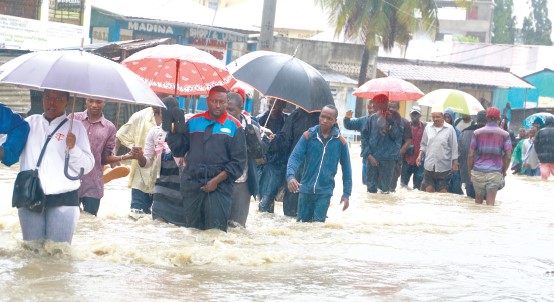According to the Kiambu Meteorological Department, signs of El Nino even as the country is still expecting heavy rains from October 2023 to January 2024.
Kiambu Meterological Department Director Magdalene Gateri, noted that in the first week and second week of October, the duration of the onset will see rain going above average, meaning the normal rains that are usually supposed to be experienced will increase more.
“Some regions in Kiambu will experience rainfall as high as 500 millimetres per season, which is way above average, and once they start, we will not be discussing how they are going to end as the season might last up to January 2024,” she said.
She said that a preliminary forecast of the weather pattern indicates that the Pacific Ocean is warming, with higher temperatures recorded in the central Pacific pointing to signs of El Nino-related torrential rains.
“I would like people to understand that El Nino does not always mean the rain; what normally happens is that we look at the signs and often observe the ocean behaviour and reports on a range of El-Nino Southern Oscillation (ENSO) indicators”, she said.
Did you read this?
Giving the outlook for October-December 2023 for Kiambu, Gateri confirmed above-normal (average) rainfall that will be well distributed in both time and space, while the seasonal rains are expected to have an early onset starting between the 1st to 2nd weeks of October 2023 and is likely to continue in January 2024.
Additionally, she stated from September 19 to 25, most mornings will be cloudy, giving way to sunny intervals in the afternoon.
The lower-ground areas in the county are expected to receive 0–5 millimetres of rain, while some high-ground areas cumulatively are expected to receive 10mm of rainfall in the whole week.
Kiambu County has four broad topographical zones: the Upper Highlands are found in Lari constituency, and they are an extension of the Aberdare ranges that lie at an altitude of 1,800–2,550 metres above sea level.
Lower Highlands zone (lies between 1,500 – 1,800 metres above sea level) covers Limuru and parts of Gatundu North and Gatundu South, Githunguri, and Kabete constituencies, characterised by hills and high-altitude plains (plateaus).









